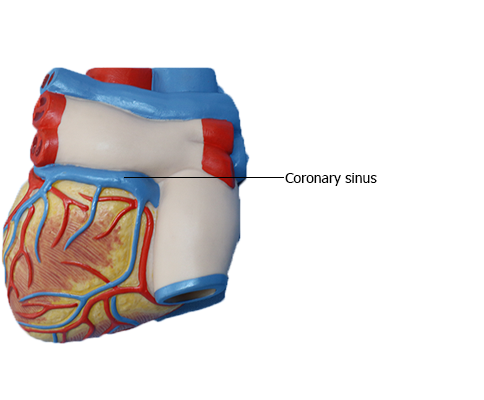Main Model

HEART : Coronary sinus

Right Atrium
The right atrium forms the right border of the heart and receives venous blood from the SVC, IVC, and coronary sinus. The ear-like right auricle is a conical muscular pouch that projects from this chamber like an add-on room, increasing the capacity of the atrium as it overlaps the ascending aorta.
The interior of the right atrium has a:
• Smooth, thin-walled, posterior part (the sinus venarum) on which the venae cavae (SVC and IVC) and coronary sinus open, bringing poorly oxygenated blood into the heart.
• Rough, muscular anterior wall composed of pectinate muscles (Latin musculi pectinati).
• Right AV orifice through which the right atrium discharges the poorly oxygenated blood it has received into the right ventricle.
The smooth and rough parts of the atrial wall are separated externally by a shallow vertical groove, the sulcus terminalis or terminal groove, and internally by a vertical ridge, the crista terminalis or terminal crest. The SVC opens into the superior part of the right atrium at the level of the right 3rd costal cartilage. The IVC opens into the inferior part of the right atrium almost in line with the SVC at approximately the level of the 5th costal cartilage.
The opening of the coronary sinus, a short venous trunk receiving most of the cardiac veins, is between the right AV orifice and the IVC orifice. The interatrial septum separating the atria has an oval, thumbprint-size depression, the oval fossa (Latin fossa ovalis), which is a remnant of the oval foramen (Latin foramen ovale) and its valve in the fetus.